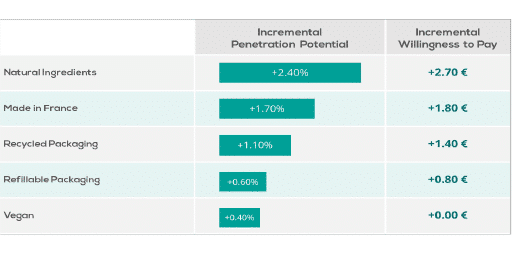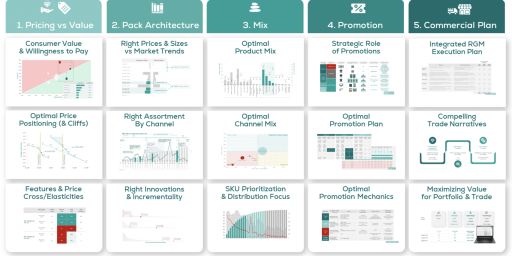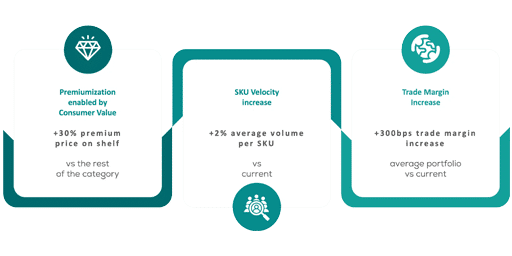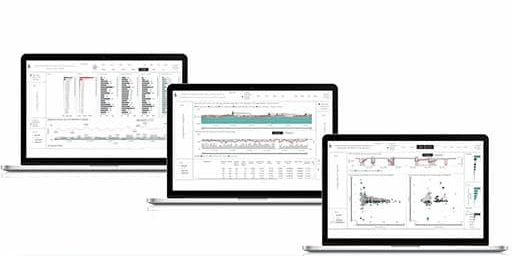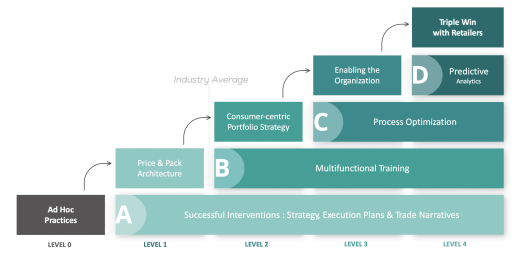Clear Assesment of relative Consumer Value and Willingness to Pay, for current and future products
Are you leaving money on the table with a price that is too low, or priced higher than the consumer value perception of your brand? Can you increase your price without losing volume, or should you lower your price to match the consumer value perception?
Price elasticity calculation is done on the entire porfolio.

PPD – Pricing power drivers
Pricing power drivers are the key factors that enable a company to maintain its pricing power in the market. A company with strong pricing power has the ability to set and maintain higher prices for its products or services compared to its competitors.
There are several drivers that can contribute to a company’s pricing power. One of the most important is a strong brand reputation. A well-established and respected brand can command higher prices for its products or services because consumers are willing to pay more for quality and reliability.
Another important pricing power driver is product differentiation. Companies that offer unique products or services that are not easily replicated by competitors can charge higher prices because they have a competitive advantage. This can be achieved through innovation, design, or a unique customer experience.


Supply and demand dynamics can also impact a company’s pricing power. If demand for a product or service is high and supply is limited, a company can charge higher prices without losing customers. However, if supply is abundant and demand is low, a company may need to lower prices to remain competitive.
The competitive landscape is another key factor in determining a company’s pricing power. If a company operates in a highly competitive market with many players offering similar products or services, it may be more difficult to maintain pricing power. However, if a company has a competitive advantage, such as a proprietary technology or unique distribution network, it may be able to charge higher prices than its competitors.
Finally, cost structure can impact a company’s pricing power. Companies with lower costs can afford to offer lower prices and still maintain profitability. By contrast, companies with higher costs may need to charge higher prices to maintain profitability.
In summary, pricing power drivers are the key factors that enable a company to maintain its pricing power in the market. A strong brand reputation, product differentiation, supply and demand dynamics, the competitive landscape, and cost structure are all important factors that can impact a company’s ability to set and maintain higher prices for its products or services.
Willingness to pay
Willingness to pay (WTP) is a critical concept in pricing strategies, as it represents the maximum price that a consumer is willing to pay for a particular product or service. Understanding WTP is crucial for businesses that want to maximize their profits while still offering value to their customers.
By determining the WTP of their target customers and aligning their pricing with the perceived value of their product or service, businesses can maximize their profits while also delivering value to their customers.


